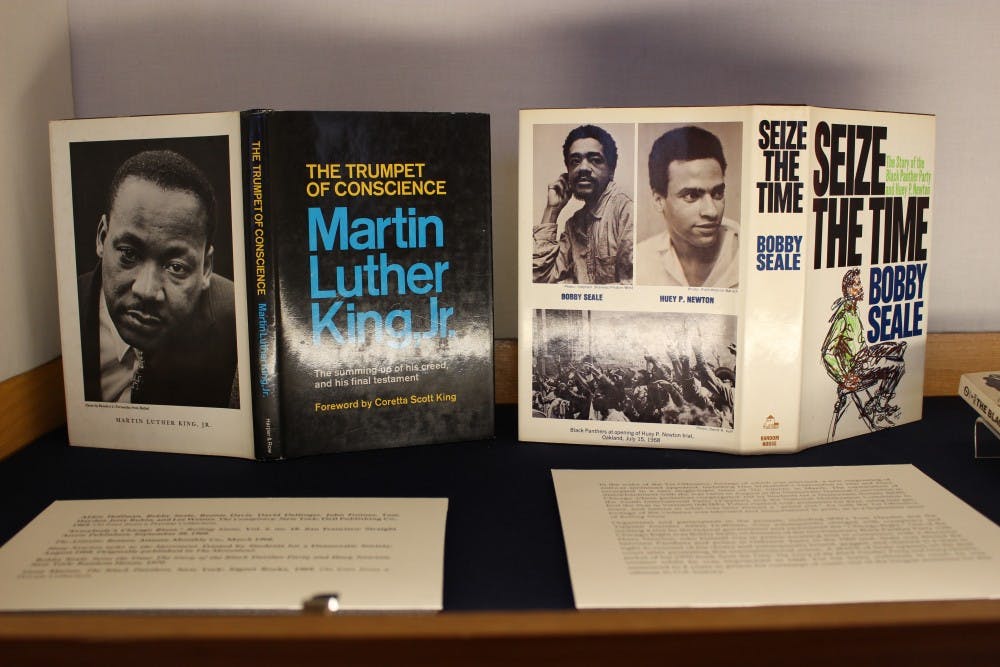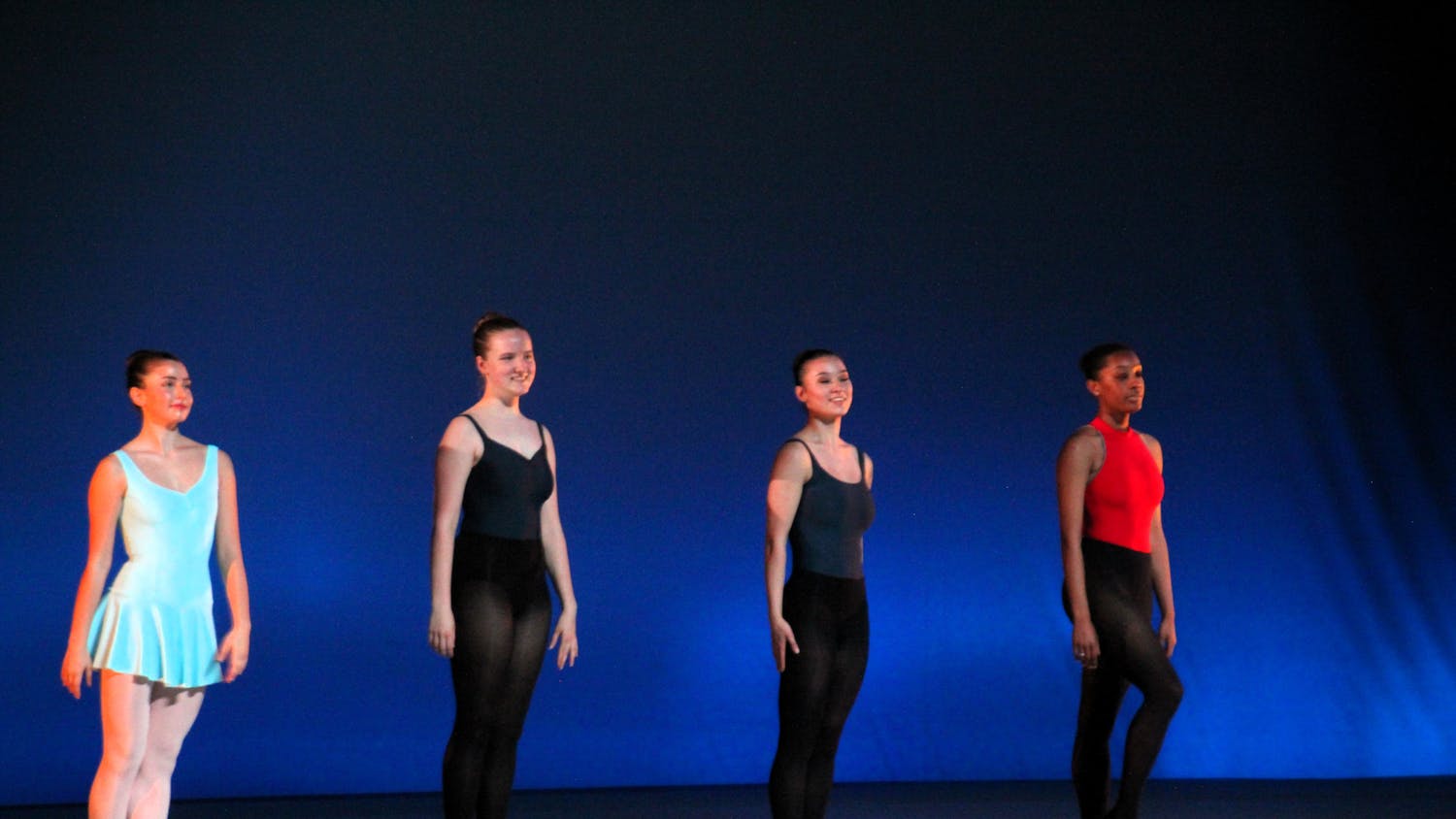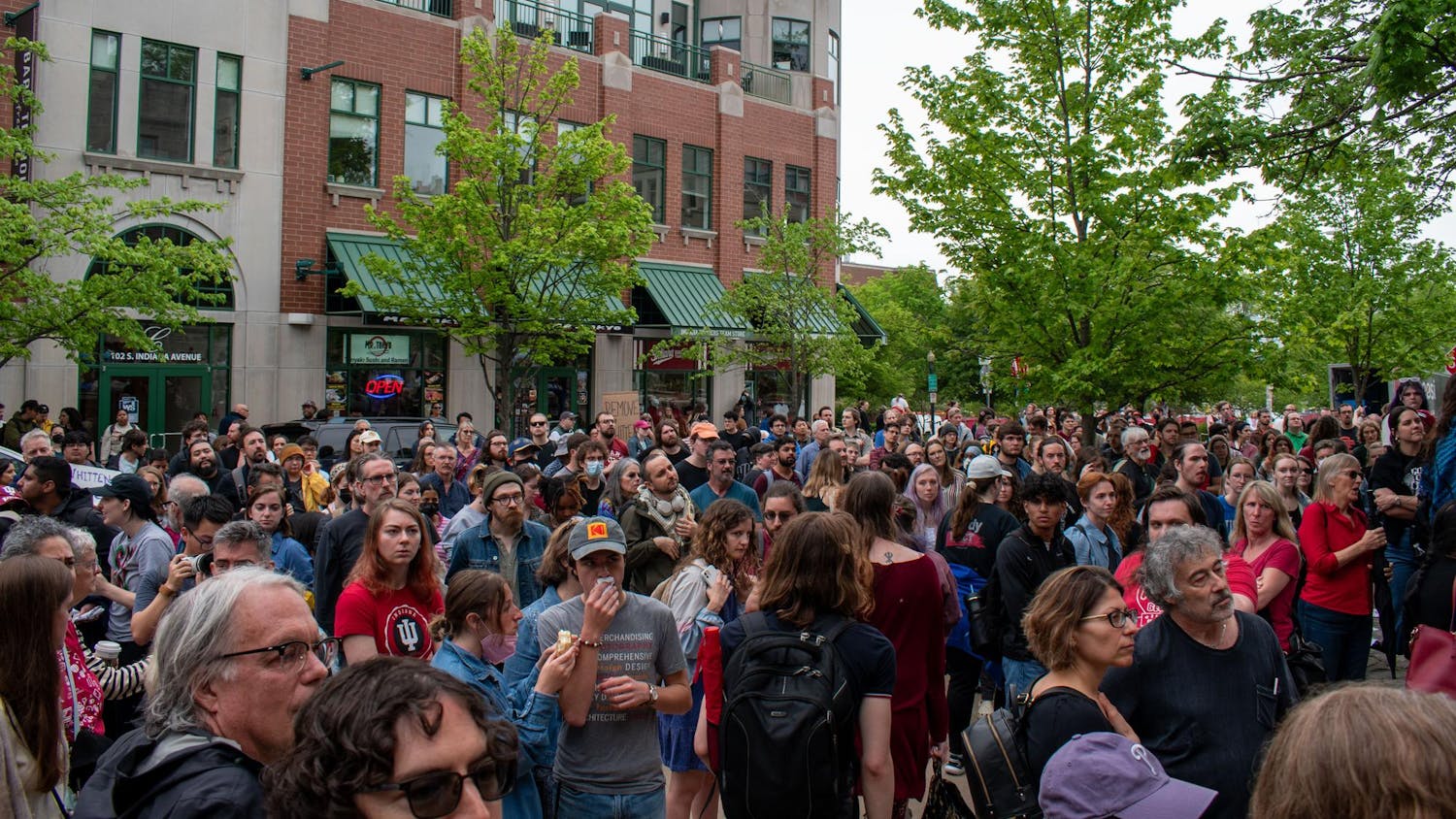Meghan McCullough, an IU junior studying art history, wears a patch on her jacket of a Campbell's soup can. Though it draws attention, she said she wears it for more than the laughs.
"Some people are like, ‘Wow, you’ve got soup on your jacket,’" McCullough said. "Other people are like, ‘Oh, I understand.'"
The patch is a reproduction of Andy Warhol’s 1968 work, "Campbell’s Soup I."
McCullough said she likes Warhol because he takes the mundane and changes people's perspectives on it.
“A lot of it is based on whatever was considered traditional before then,” McCullough said. “You go from these strict, understood ideas of what art is, and it becomes a challenge of, ‘Why isn’t this art?’ He showed that there is more to what we see.”
The year 1968 was a time of unprecedented changes in art and revolution. The dawn of television and video made new channels of artistic expression and communication possible.
“It’s this global moment of an explosion of visual culture,” Faye Gleisser, assistant professor of contemporary art, said. “These are things that didn’t exist in previous periods of unrest and protest. The art couldn’t look the same as it had before.”
Art played a large part in anti-colonial battles around the world, Gleisser said. Artists started experimenting with body art and minimalism conveyed in forms such as spray paint and passive resistance.
The American Civil Rights Movement was influential in defining how the occupation of space, such as in sit-ins, is a form of protest, she said. Artists took a note from this.
“They’re interested in real space and how real bodies encounter objects in space,” Gleisser said. “There’s more of a questioning happening around what those encounters mean.”
“Primary Structures” is a 1966 work of large-scale, minimalist sculptures that experiments with shape, form and space.
Richard Serra’s “Splashing” from 1968 is a form of process art that emphasizes the labor of Serra’s body as he flings molten lead onto a wall, Gleisser said. The art is a material manifestation of his specific gestures in a specific time and place.
Civic unrest was a prominent theme in art around the world. "Tucuman Arde," or "Tucuman is Burning," was an art exhibit in 1968 Buenos Aires and Rosario, Argentina, created in response to the government’s shutdown of sugar mills and farms. Artists gathered to broadcast the situation through audio, visual graffiti and stickers as well as performance-based means.
“It feels like a happening,” Gleisser said. “There were a lot of posters involved. It was a way to achieve a certain kind of voice, and to give critical awareness that this was even happening.”
In France, May, which was titled "Mai 68," was a month of civil unrest, strikes, demonstrations and occupations that spawned many forms of street art and slogans.
“Sous les pavés, la plage,” or, “Beneath the paving stones, the beach,” was a slogan spray-painted around Paris during the time period.
The phrase references the sand found beneath the cobblestone protesters threw at police, according to the Financial Times website. It also portrays the conviction that capital and consumption may be subverted by discovering new and unexpected connections and histories.
Among other slogans from Mai 68 are, “It is forbidden to forbid,” “Poetry is in the streets,” and “I love you! Oh, say it with the paving stones!”
“Given particular local histories, the art looks or feels different because there are different risks involved,” Gleisser said. “‘68 stood for this watershed moment of experimentation and protest.”
The film movements that took precedence after the French New Wave of film in the 1950s and 1960s was just as globally influential as art.
French filmmaker Jean-Luc Godard, and others in his cohort, influenced Latin American filmmakers wanting to draw connections between aesthetic choice and ideas of revolution.
“It was marrying social awareness with a kind of radical aesthetic,” Joan Hawkins, associate professor of Cinema and Media Studies, said. “You wanted your art and your politics to jive and to mesh. You wanted one to inform the other.”
In the United States, Hawkins said filmmakers were becoming experimental and avant-garde. The film “Invocation of My Demon Brother” is an 11-minute film that includes clips of the movie’s cast smoking out of a skull and a publicly filmed Satanic funeral for a pet cat.
“Hollywood didn’t know where to turn in the ‘60s,” Hawkins said. “The movies it had been making largely appealed to people who were now often sitting at home. Things became much wilder, much more experimental.”
Film journalists arose as movie theaters and film became more prominent when film gained popularity, Hawkins said.
“People were beginning to talk about cinema as a kind of art form,” Hawkins said. “Earlier, it had been talked about largely as entertainment.”
American film critic Pauline Kael wrote for The New Yorker from 1968 to 1991 and famously squabbled and disagreed with the opinions of other critics.
“Kael would carp at the guy from Esquire and tell him he had no taste, and then his next column he would carp back at her,” Hawkins said. “It was just this weird, dizzying time.”
"New Hollywood," as this film movement was called, included films such as road drama “Easy Rider” and psychological thriller “Straw Dogs.” By 1968, the enforcement of the Hays Code, guidelines censoring major studio productions, was abandoned, allowing for such experimentation.
Innovations in camera technology also made film more accessible to audiences. Cameras became more lightweight and compact, and companies developed better lenses for shooting in different lighting conditions.
When social media and the internet first came out, Hawkins said there was a utopian vision of how people would start relating to each other based on content rather than looks. With film, there was a similar optimism.
The cinéma vérité, or truthful cinema, of filmmaker Frederick Wiseman was interested in showing life in an unstaged, unmanipulated manner — whether they be scenes of high schools, mental institutions or scenes including force feeding.
“If you could take your camera out in the street and film things that were unfolding, that would have an impact on policy,” Hawkins said.
Hawkins recounted a day about a year ago when she was walking out of the Monroe Country Public Library and saw two police cars roar up and pull over a black man.
“There were about three of us standing there, watching the cops approach him,” Hawkins said. “All of us took our cell phones out and began filming. When you have these means at your disposal, there’s this feeling that not only can you document what's going on, you almost have a moral obligation to.”
The police were polite and did not harass him, Hawkins said, though the anecdote portrays how the moral obligations film took on in 1968 still resonate today.
“One of the things people believed in 1968 was that if people know what’s happening and people see what's happening, then those things will change,” Hawkins said. “We still believe that.”




